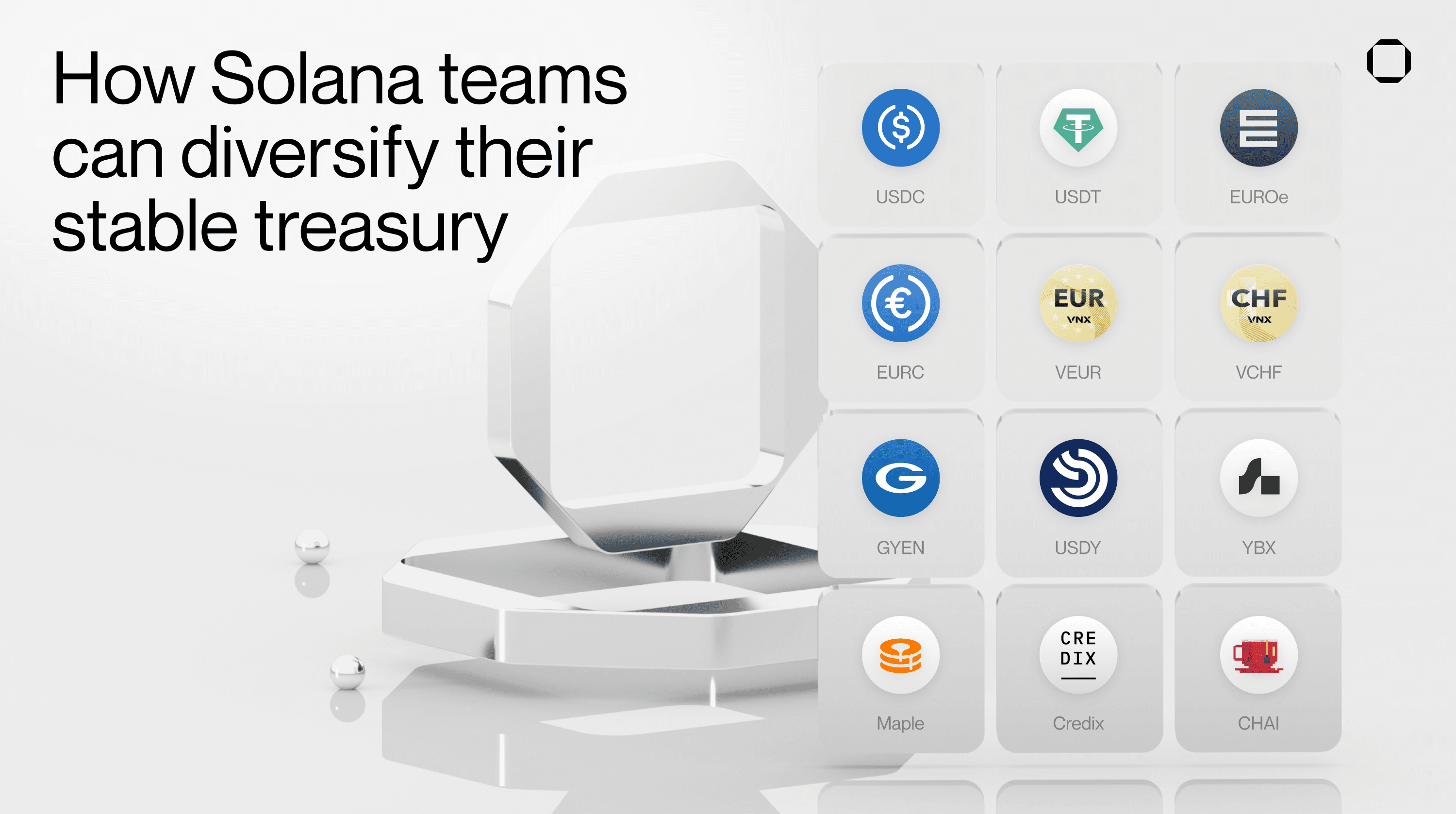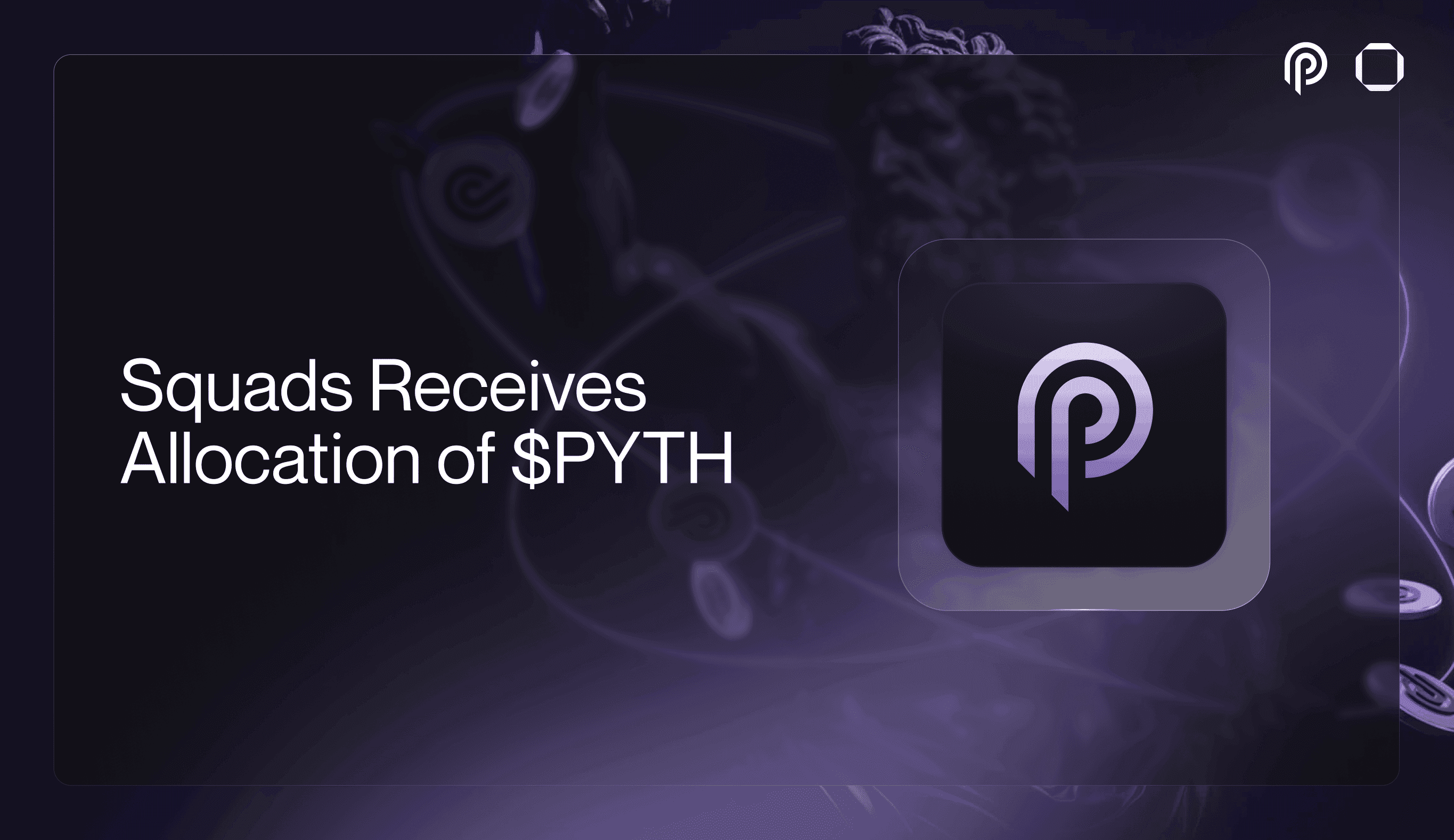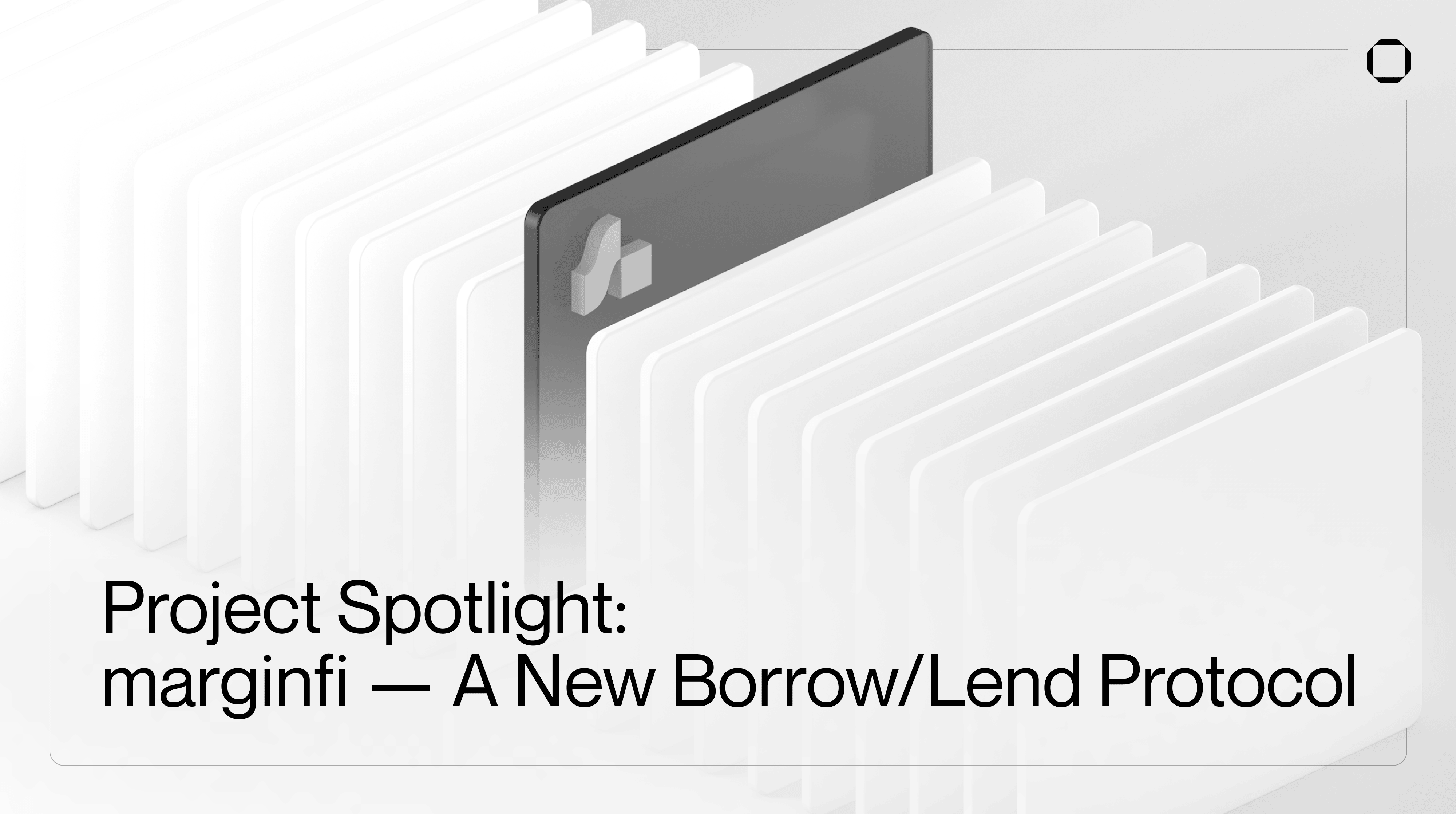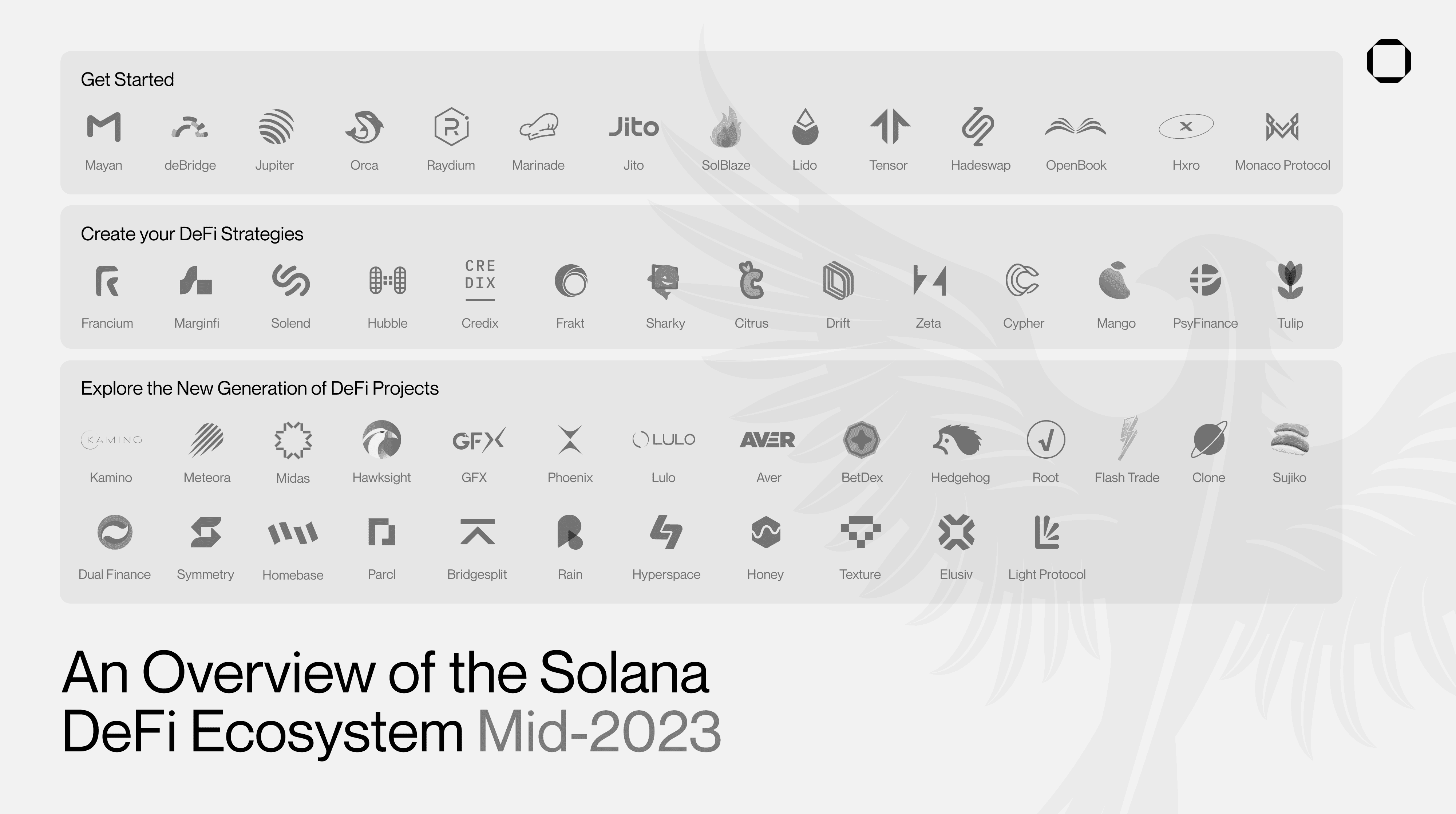Stablecoins have been a huge unlock for on-chain enterprises, enabling them to raise funds, pay employees, or cover expenses like audits with the ease and security of self-custody. Platforms like Squads have also allowed such companies to manage their stable treasury securely and collectively with their team members on Solana.
The current landscape of stablecoin offerings on Solana is evolving quickly, offering projects new alternatives beyond simple "wrapped" USD. Diversifying a stable treasury remains important, as we have seen in the past that counterparty risk can be significant. This article explores how enterprises operating on Solana can diversify their stable treasury based on their company profile and goals.
USDC and USDT Remain the Leaders
The biggest stablecoins on Solana in terms of liquidity are USDC and USDT. They both represent 1:1 USDC but on-chain, so they can be used to exchange assets, manage expenses, and more. They are both centralized, meaning they are managed by a centralized entity. USDC is the leading stablecoin on Solana by usage, TVL, and liquidity and is owned by Circle, a regulated US entity. Most of USDC is backed by US treasury bills. USDT is the second-largest stablecoin on Solana, also managed by a centralized entity, Tether, and backed by diverse types of assets such as stocks, cash and U.S. treasury bills.
Many on-chain enterprises on Solana hold USDC for their stable operations as it allows them to easily off-ramp it through their Circle Business account. They can KYB their company, and then withdraw USDC directly to their banking account to receive USD. This is particularly useful for enterprises generating revenue on-chain and looking for an easy way to use this cash for paying for things like commercial rent, employees, etc. Many companies also offer off-ramp for USDC on Solana, such as Coinflow, the official off-ramp partner of Squads.
Stablecoins Pegged to Other Currencies Than the US Dollar Are Emerging
While convenient, USDC and USDT can be a hurdle for companies operating outside of the US and having to deal with forex fluctuation against their local currency (e.g. EUR). Not only do they have to make sure they are not losing against their currency, but it also makes it harder for them to off-ramp to their EU bank accounts and pay for expenses that are not on-chain, such as salaries.
Fortunately, recently new players have entered the market to offer alternative stable currencies to on-chain companies operating on Solana:
EUROe - a stablecoin pegged to the EUR, always redeemable for 1 Euro by eligible parties. It is managed by Membrane Finance, a Finland-based European entity.
EURC - managed by Circle, the same company behind USDC.
VEUR, VCHF (pegged to the Swiss Franc) - issued by VNX, a company licensed by the Liechtenstein Financial Market Authority (FMA) under Blockchain Act.
GYEN - issued by GMO Trust and 100%-fiat backed and always 1:1 redeemable with Japanese Yen.
While the diversity of stablecoins enables on-chain enterprises to manage their treasury in a more efficient way, liquidity for those stables remains key. Too low liquidity could prevent a project from transacting effectively. This is still a work in progress on Solana as capturing liquidity for such assets takes time, business development effort, but also trust to earn.
Diversify Treasury with Productive Stable Opportunities
Beyond traditional stablecoins, we are also seeing new stables bringing innovative use cases to companies. One example is USDY, a yield-bearing stablecoin that automatically accrues interest from off-chain treasury bill rates. It is offered by Ondo, a leading crypto RWA company. Another example is CHAI, which was bridged through Wormhole and represents the DAI savings interest rate from MakerDAO.
These stablecoins accruing over time offer a fully on-chain alternative to savings accounts for enterprises operating on Solana. Rather than off-ramping stablecoins to a business account, they can easily exchange USDC/USDT/any stablecoin for such yield-bearing stables to easily earn interest on stable assets while staying on-chain. This can be extremely appealing for companies with a large stable treasury looking to earn passive interest on idle treasury.
For projects looking to diversify their stables with more productive, non-volatile solutions, there are also:
Maple which offers U.S treasury bill yield to Solana-based teams through USDC lending,
Credix offering fixed-rate returns on credit made with real-world companies, connecting investors with FinTechs in emerging markets.
Such solutions offer less flexibility than yield-bearing stablecoins as they usually take longer to exit. But they remain a suitable alternative for on-chain enterprises looking to diversify their stable with more productive assets that still remain pretty stable.
Lastly, while a majority of the largest Solana stablecoins are owned by centralized entities, new entrants are trying to shift the paradigm and bring decentralized stablecoins to Solana. One such example is YBX, an upcoming yield-bearing stablecoin by marginfi. Minted only by LSTs like JitoSOL and mSOL, YBX automatically accrues Solana staking rewards and redistributes it to holders to offer a true on-chain savings-like interest. Being issued by a decentralized protocol, this gives confidence to YBX holders that their stablecoins can never be frozen, which can sometimes happen with stablecoins managed by centralized entities like USDC and USDT.
Ultimately, liquidity and trust in the issuer remain crucial components of how a project should consider diversifying its treasury. The stablecoin ecosystem on Solana is still developing and it will take time before trading millions in various types of stablecoins becomes seamless.
However, Solana seems prone to be the best blockchain to enable true on-chain forex thanks to its lightspeed throughput and low transaction fees, enabling products like Phoenix’s orderbook to replicate traditional finance with the advantages of blockchain technology. Through Squads' multisig infrastructure, issuers can already manage critical aspects of their stablecoins (minting/freezing), while the Squads multisig platform enables enterprises operating on Solana to manage their stable treasury securely and collectively with their team. Leading companies such as Ondo, VNX, marginfi, Jito, Phoenix, Kamino, Raydium and more rely on Squads for their operations.
About Squads Labs
Squads Labs is a core contributor to Squads Protocol, the leading smart account infrastructure on Solana. In addition to helping maintain the protocol, Squads Labs makes the Squads platform, an institutional-grade smart account platform for Solana-based teams. To learn more about Squads Labs, please visit https://www.sqds.io/.
About Squads Protocol
Squads Protocol is Solana's smart account standard that secures $15+ billion in value. Teams, individual users and developers use Squads Protocol to leverage smart accounts to upgrade how they transact, manage and own digital assets.To learn more about Squads Protocol, please visit https://squads.so/protocol



